This question is best seen with an image:

Above we can see two equivalent representations of a circuit, on the left side we have a voltage source closed-loop connected to a Resistance (R), and on the right side the open-loop equivalent connected to earth. From this point we would say that both circuits should behave equally.
However when we try to translate the conceptual representation to real life, we find that the current doesn't flow in the second circuit, this is obviously because the floor is usually made of a non-conductive material, but then why do we make such a conceptual representation? On the other hand I've seen in constructions and other big electrical devices that the usually wire the machine to the floor, how come the floor will conduct in such case?
I was taught in school that 'earth' represents an infinite warehouse of charge, so we can give and extract as much charge as we need from it, then why in my example circuit I can't extract the charge?
